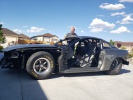
Originally Posted by
Flyer

Spawne, I did. Define odd, lets work through the logic and see how odd my thinking is. Which ones are you referring to.
Cruze, I thought that too, but it doesn't make since to me. I thought maybe it's a glitch since it's happening right there where it starts to richen up. I added the .001 to the 2.500 in an effort to clear a glitch, but no dice. Following the PE table, it should start out and richen itself up.
I changed the PE table because at heavy throttle, I'd see really lean conditions down low (1.066) and it would start adding fuel and clear up the knock and run better.




 Reply With Quote
Reply With Quote


